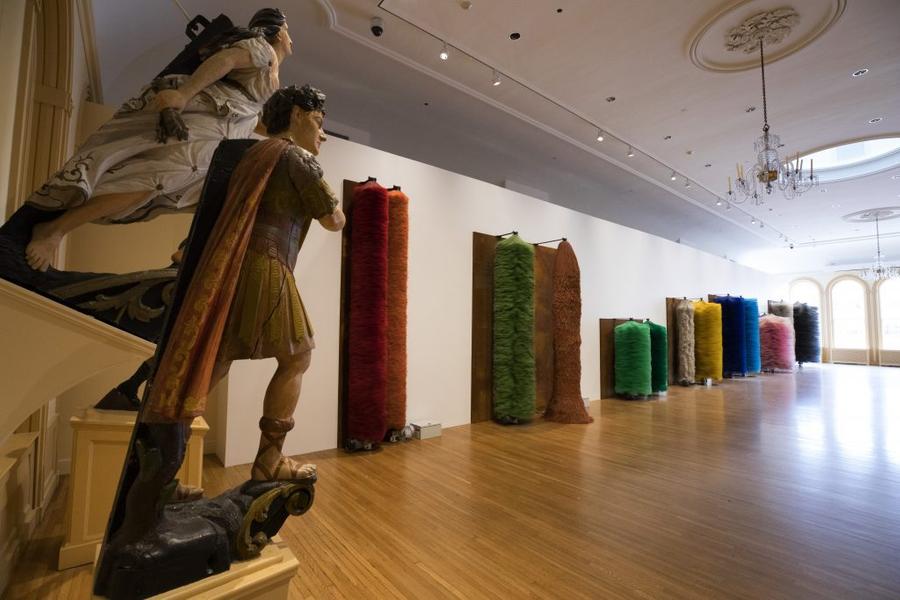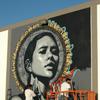Boston Covers Art in the Internet Age with Region-Wide Exhibitions
- BOSTON, Massachusetts
- /
- February 22, 2018

This winter, 14 arts organizations throughout Greater Boston are partnering to present an ambitious, region-wide exploration of art and technology. This collaboration now offers a range of exhibitions, performances, film screenings, and other programs all exploring the relationship between art and technology in celebration of the Boston area’s rich history of technical innovation, and its overlap with art.
Touching on issues of privacy, community, networks, identity, innovations, surveillance, and more, the ART + TECH collaboration is organized in conjunction with the current exhibition Art in the Age of the Internet, 1989 to Today, at the Boston ICA.

Art in the Age of the Internet examines how the internet has radically changed the field of art, especially in its production, distribution, and reception. The exhibition is comprised of a broad range of works across a variety of mediums—including painting, performance, photography, sculpture, video, and web-based projects—that all investigate the extensive effects of the internet on contemporary art and culture.
The exhibition is accompanied by a major scholarly publication and web platform.
Partner organizations include Berklee College of Music, Boston Cyberarts, Carpenter Center for the Visual Arts at Harvard University, deCordova Sculpture Park and Museum, Harvard Art Museums, Harvard Film Archive, Isabella Stewart Gardner Museum, MIT List Visual Arts Center, Museum of Fine Arts, Boston, Museum of Science, Boston, Peabody Essex Museum, Rose Art Museum at Brandeis University, and Tufts University Art Galleries.
Of particular note, the Peabody Essex Museum, in Salem, hosts the first major thematic exhibition to survey the rapidly evolving role of play in contemporary art and culture. Nearly forty works by seventeen leading and emerging artists reveal how behaviors essential to the creative process — risk-taking, exploration, questioning and curiosity — are all encouraged by the act of play. Through large scale installations, video, sculpture, photographs and tactile experiences, PlayTime explores how play catalyzes creative expression, enchants the ordinary and helps us understand ourselves in new ways.
On view to May 6, the PEM exhibition includes an immersive balloon room installation by Turner Prize winner Martin Creed and participatory One Minute Sculptures by internationally renowned artist Erwin Wurm which invite visitors to become part of the exhibition by striking and holding unexpected poses with everyday objects.
Some of the featured artists embrace playful behaviors in order to re-enchant the ordinary and to encourage fresh dialogue through play. Artist Lara Favaretto’s sculpture Simple Couples, installed in PEM’s historic East India Marine Hall, features seven pairs of spinning car wash brushes of different sizes and colors, which move in a mesmerizing choreography of color and light. Elsewhere, Pedro Reyes’ Disarm Mechanized ll transforms 6,700 guns confiscated by the Mexican government into an array of working musical instruments that push these objects beyond their originally intended purpose.
The world of video gaming, which currently generates more revenue each year than the music or movie industries, offers rich material and subject matter for artists to tackle in provocative ways. Angela Washko’s work, Performing in Public: Ephemeral Actions in World of Warcraft, delves into World of Warcraft -- the online role-playing game with more than 10 million users -- to conduct absurdist performances and engage other players in discussions of gender, sexism and harassment. Her work inside World of Warcraft began in 2012, a couple of years before #gamergate made us all aware of the vicious harassment and threats to which women and gender non-conforming gamers are commonly subjected. By documenting her interactions on the platform Washko doesn’t critique the game itself, but rather gets inside the game to facilitate a dialog about the rules by which we are all agreeing to play.
“Play is no longer just a reward for hard work,” says Trevor Smith, exhibition curator and PEM’s Curator of the Present Tense. “It is absolutely central to how we learn how to be human.”
The PlayTime digital platform -- playtime.pem.org -- jumpstarts a conversation about the exhibition’s themes.
More information about the organizations and events can be found at aiai.icaboston.org.
















100x100_c.jpg)